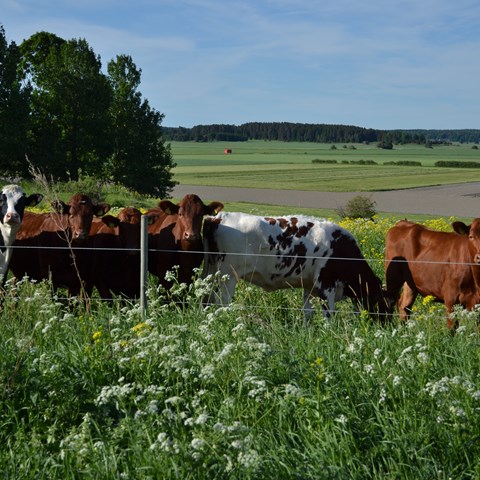Facts:
The project is financed by the Swedish research council Formas.
The project started in 2016 and will run until the end of 2018.
Project leader is Susanne Eriksson, with co-applicants Anna Johansson and Erling Strandberg.

In this project we study changes in genetic diversity over time and signs of selection in Swedish dairy cattle breeds.
Commercial dairy cattle breeds are intensively selected to be competitive on an international market. In spite of large numbers of individuals, the effective population size for especially Holsteins has been shown to be small. In contrast to the commercial breeds, the focus in small local breeds has been on preserving original traits. New methods based on dense genomic markers can reveal signatures of selection and inbreeding in specific regions of the genome, and using a long time series we can see when genetic variation was lost. The aim of this project is to study changes in genetic variation, homozygosity and inbreeding in Swedish dairy cattle, predominantly using tens of thousands of genotypes already collected for genetic evaluations. We will study genomic and pedigree information collected over more than 50 years in two commercial and one local Swedish breed. Measures of inbreeding and signs of selection, such as heterozygosity, selective sweeps, runs of homozygosity and pedigree based measures will be estimated, and compared with changes in phenotypes related to fitness and production traits. This will increase our knowledge about effects of selection on loss of genetic variation in modern domestic breeds and could become a valuable basis for advice to breeding organizations aiming for sustainable breeding.
The project is financed by the Swedish research council Formas.
The project started in 2016 and will run until the end of 2018.
Project leader is Susanne Eriksson, with co-applicants Anna Johansson and Erling Strandberg.
Susanne Eriksson
Researcher at the Department of Animal Breeding and Genetics; Department of Animal Breeding and Genetics, Applied Genetics
Telephone: +4618672007
E-mail: susanne.eriksson@slu.se